›
Residencia Artistas // Richard Tuohy & Diana Barrie
Richard Tuohy & Diana Barrie visitan Barcelona como artístas residenctes en el programa de residencias Crater-Lab/Hangar dentro del proyecto SPECTRAL Rrealizarán una residencia artística en Crater-lab en colaboración con Hangar de un mes de duración. Durante su estancia en Barcelona participan el el festival de artes cinemáticas expandidas ALUD #2 con dos performances (+ info ) . A final de mes presentarán el proyecto en su fase final para mostrar los resultados de la nueva obra realizada.
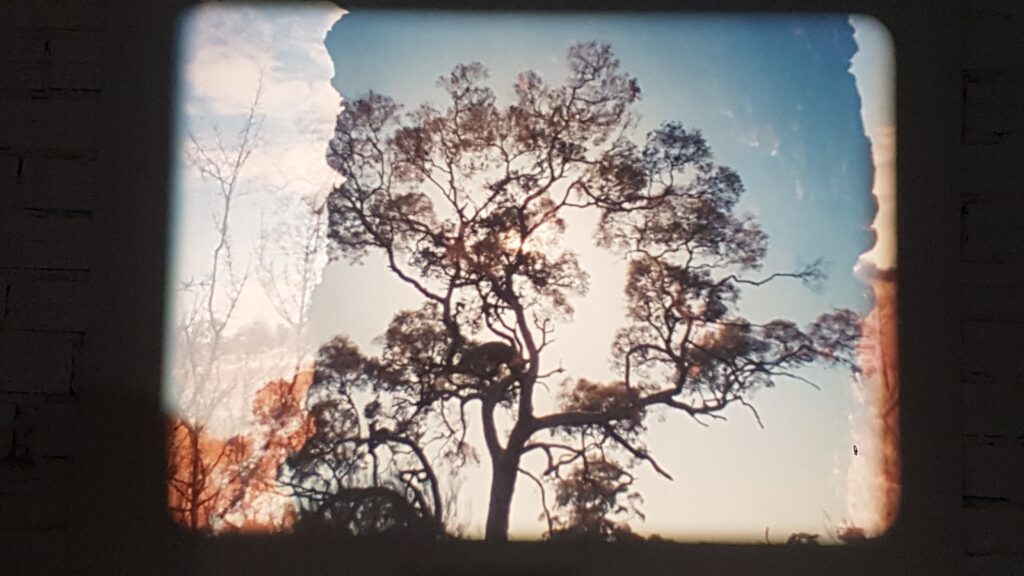
Aprovechando sus conocimientos en torno al dispositivo fílmico , Richard y Dianna ofrecerán un taller de Copiado por contacto en 16mm . Imperdible!
Durante estas cuatro semanas Richard & Diane trabajaran en su nuevo proyecto de arte cinemático expandido con material filmado en 16mm east-west Australia ” Shock of the old”
“We are Australian. Our whole lives are here. Our senses are tuned to the experiences of our bush. But this was our first trip over the daunting treeless plain that separates the east and west of the continent. Our eyes are not at home in the west. Every step is ancient newness.
While in the west we shot 40+ roll of 16mm negative film and made field recordings. Shock of the old will be a multi-projector performance work exploring these image rolls and audio recordings.”
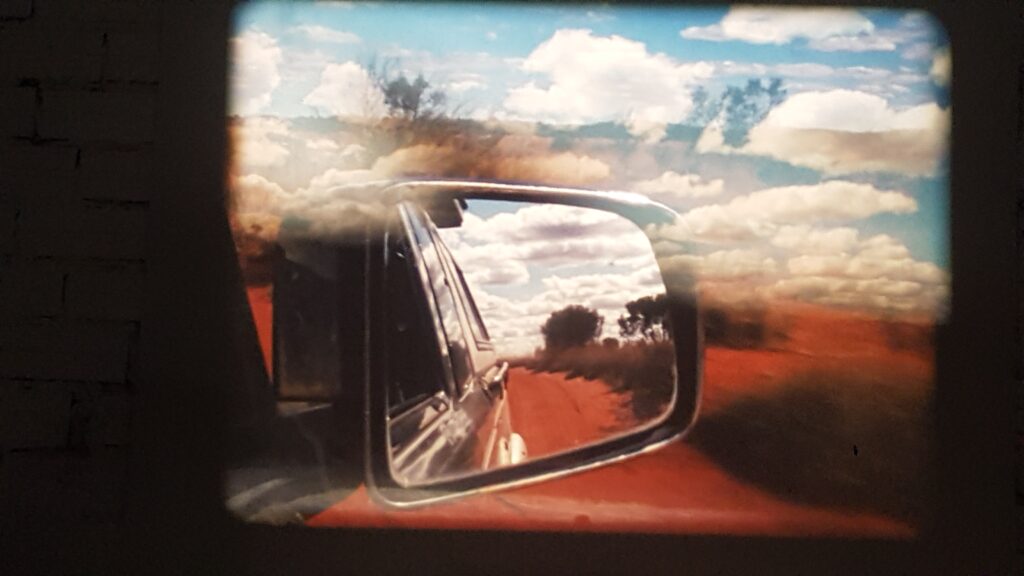
West, Before Dying
” For what seems like decades it had been a burning desire to explore the western part of Australia.
While it is of course possible to fly to Perth and some other smaller cities, there isn’t much point in
doing that unless the cities themselves are your target. To describe Western Australia as vast is
itself an understatement. It is just under half the land area of the whole continent. Everywhere in
WA is effectively remote. Even the capitol city of Perth is several thousand kilometres from
Australia’s other major population centres. To explore WA, it is really essential to do it by car. And
if starting by car from the east coast of Australia you first have to cross several thousand kilometres
of desert just to reach the boarder. And it is this desert that makes WA so fascinating. Yes, it is the
same continent as the rest of Australia. But in terms of flora and fauna this intervening desert has
meant effective isolation at least since the last ice age, probably longer. So it is Australia, but not
Australia!
Like much of Australia, the western Australian environment is extremely fragile. Australia has one
of the highest extinction rates for flora and fauna in the world. The splendid isolation of the
continent of Australia for something in the order of 100 million years combined with climate
cycling and increasing aridity lead to Australia being one of the most bio-diverse places in the
world. And at least half of that diversity is in the west, possibly more. However this isolation left
the continent unprepared for the ravages of the interaction with the rest of the world. With
colonisation came massive land clearing, huge changes to the continent’s hydrology, copious
invasive plants, pests and pathogens. The result has been tragic. Coming from the east of
Australia, we generally experience this tragedy as largely complete. We look at the landscape and
try to imagine what was there. Our experience of the west was not like this. We had an
overwhelming feeling that the tragedy was still unfolding. One obvious aspect of this is the ravages
of cinnamon fungus (a species of Phytopthera). This soil pathogen probably came to Australia on
mining equipment in the 1970s though this is unclear. Some plants are immune to cinnamon fungus
in the soil. But a great many Australian plants, and in particular western Australian plants are
highly susceptible. In WA they refer to it as ‘the die back’. It seems the most exquisite and unique
plants are the most affected. The tragedy of die back still has much to destroy. This knowledge
coloured our vision of the splendours we saw.
We travelled for about seven weeks, driving a total of 12,830 km. This is about the same distance
as the diameter of the Earth. The familiarity and strangeness of this environment was astounding to
us. We shot over 40 rolls of colour negative film on this trip with our Spectral residency at Crater
Lab in mind. The expectation and intention of the Spectral project is that participants will make
new performance or expanded cinema work. Expanded cinema is a major part of our film practice.
However anyone who has seen some of our expanded cinema works will know that we usually
make abstract and rather high intensity works of a somewhat minimalist nature (there is of course a
rather strong tradition of this in expanded cinema work). This is not consistent with starting from
40 rolls of camera footage! So this work was always going to be a venture into new expanded
cinema territory for us. It was always going to be a risk! Personally, I see this risk as a good use of
a residency opportunity. The finished work will likely be about 70 minutes in duration and be far
more poetic and subtle than our usual expanded work. Thank you to Crater Lab for the
opportunity! ”
Richard Tuhoy & Dianna Barrie
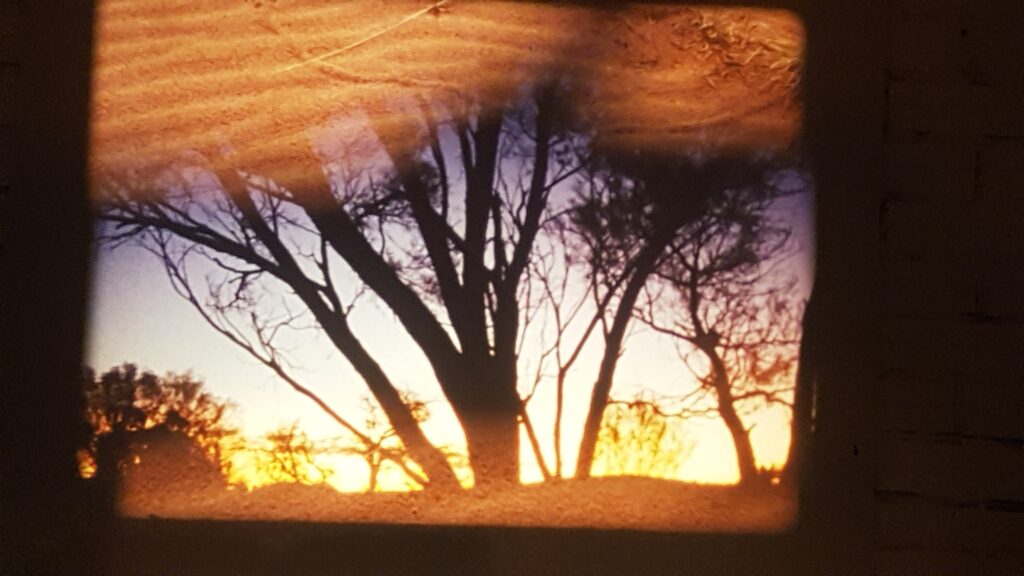
Richard Tuohy (n. 1969, Melbourne) empezó a trabajar en super8 a finales de los 80. Sus películas se han proyectado en festivales como Melbourne IFF, EMAF (Osnabruck), Rotterdam IFF, New York FF, Ann Arbor y Media City y ha realizado giras por Europa, América y Asia presentando programas individuales de su obra. En sus obras sigue firmemente la tradición cinematográfica “hand-made” (hecho a mano). Defendiendo las posibilidades del cine hecho a mano, Tuohy ha dedicado mucho tiempo y esfuerzo en compartir sus conocimientos a través de talleres y clases tanto en Australia como internacionalmente.
Dianna Barrie (n. 1972, Melbourne) encontró su camino en el cine como un término medio entre la búsqueda en la música abstracta y la filosofía. La exploración de los límites del procesamiento manual de super 8 la llevó a establecer nanolab junto con Richard Tuohy y a la intersección de la tecnología de fabricación manual y de cine industrial. Esta exploración se ha extendido más allá del trabajo individual al establecimiento de Artist Film Workshop, donde una comunidad de artistas en Melbourne están defendiendo y trabajando con el celuloide.
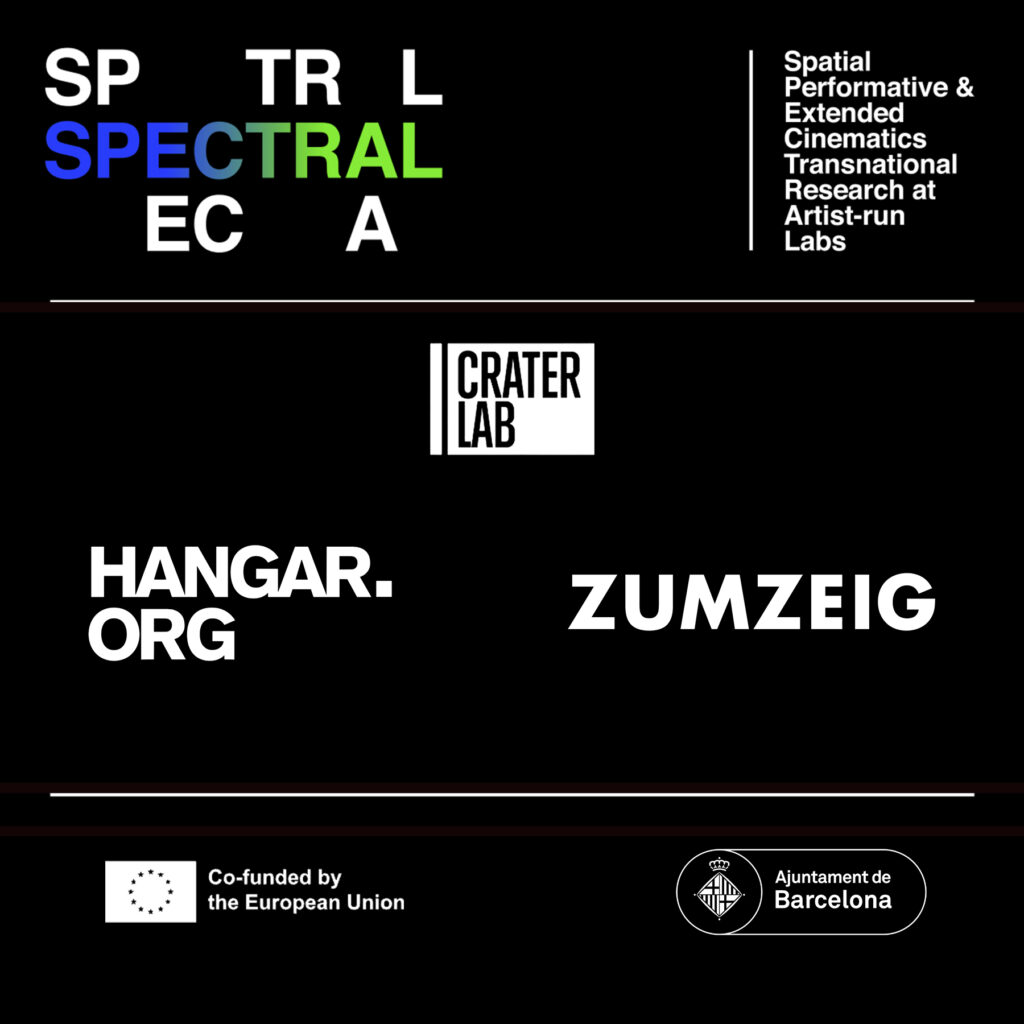
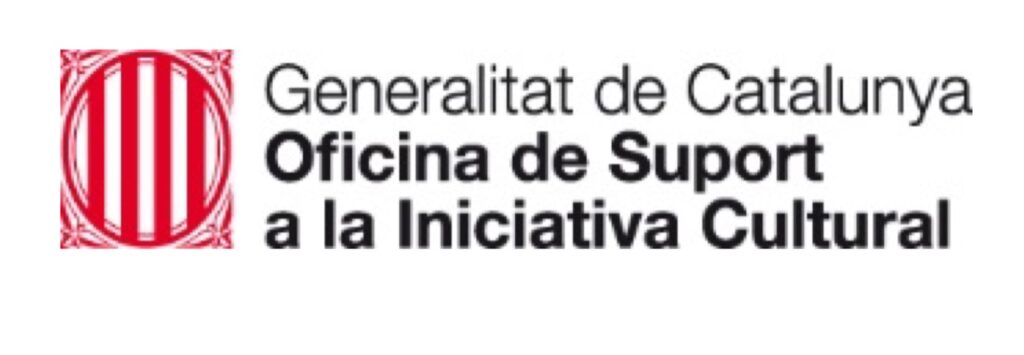
Proyecto en colaboración con Hangar y gracias al Ayuntamiento de Barcelona , Generalitat Cataluña y SPECTRAL